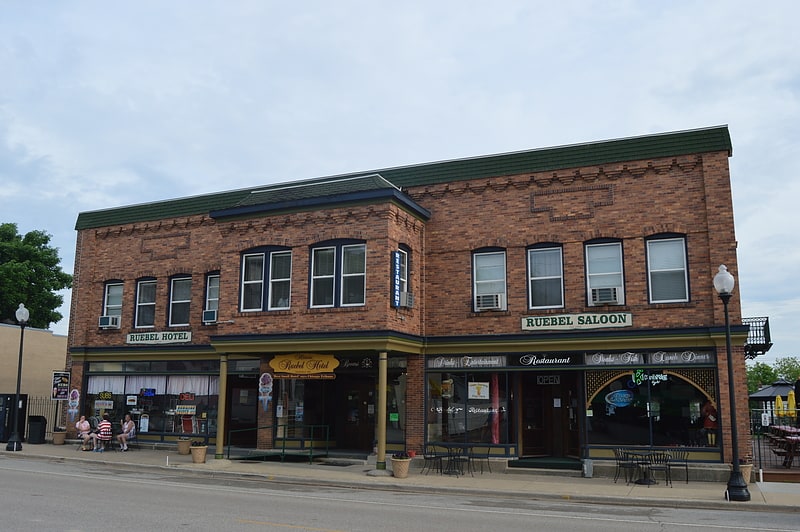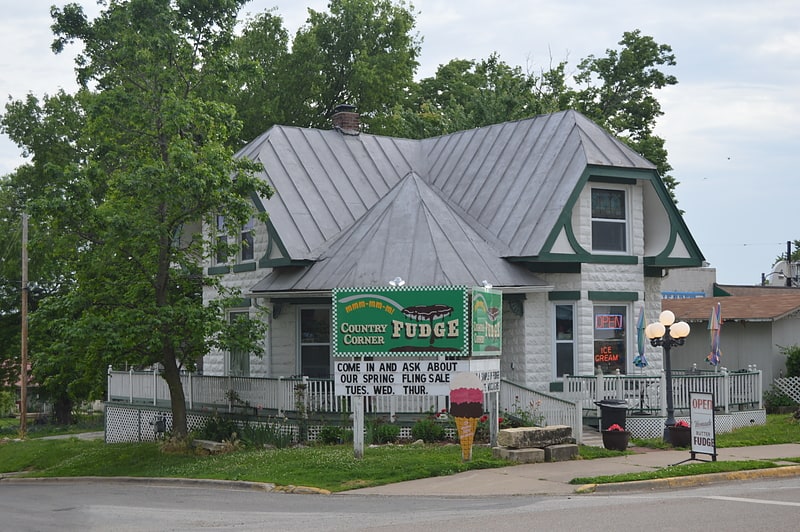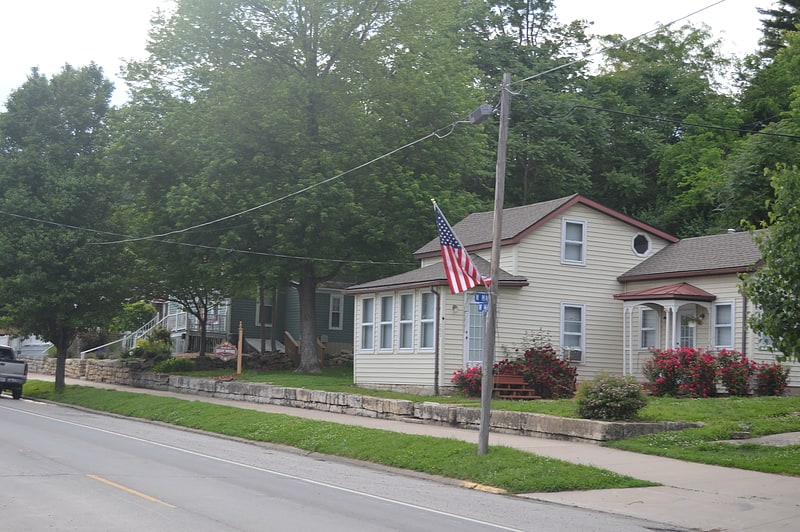Discover 7 hidden attractions, cool sights, and unusual things to do in Grafton (United States). Don't miss out on these must-see attractions: Grafton Zipline, Ruebel Hotel, and Grafton Bank. Also, be sure to include John and Amelia McClintock House in your itinerary.
Below, you can find the list of the most amazing places you should visit in Grafton (Illinois).
Table of Contents
Grafton Zipline

Park, Relax in park
Address: 800 Timber Ridge Dr, Grafton
Ruebel Hotel

Hotel in Grafton, Illinois. The Ruebel Hotel is a historic hotel located at 207–215 E. Main St. in Grafton, Illinois. Built in 1913, the structure is the second hotel building on the site; the original Ruebel Hotel was built in 1879 and burned down in 1912. The Commercial style building features decorative brickwork typical of the style; the building's cornice has brick corbelling, and raised brick panels decorate the space above the second-story brick arched windows. The hotel, which also included a saloon and a restaurant, gained a reputation as one of the best in Jersey County. It is the only surviving hotel in Grafton.
The hotel was added to the National Register of Historic Places on February 16, 1994.[1]
Address: 217 E Main St, 62037-1121 Grafton
Grafton Bank

The Grafton Bank is a historic bank building located at 225 E. Main St. in Grafton, Illinois. The Classical Revival building was constructed in 1913. The buff brick building features extensive terra cotta ornamentation on its front facade. A Diocletian window and terra cotta transom bar top the entrance, and terra cotta pilasters stand on either side. A classical entablature tops the entrance; the entablature includes an architrave, a frieze inscribed with the bank's name, and a dentillated three-section cornice. A brick parapet wall tops the facade; a stepped parapet recedes from the wall along the sides of the building. The bank which originally occupied the building closed in the 1930s, and the building has since been used for a variety of other, mainly commercial, purposes.
The building was added to the National Register of Historic Places on February 16, 1994.
The building was featured on The Profit, a CNBC program.[2]
Address: 950 E Main Street, 62037 Grafton
John and Amelia McClintock House

Building in Grafton. The John and Amelia McClintock House is a historic building located at 321 E. Main Street in Grafton, Illinois. Boat builder John McClintock built the house for his family circa 1910. The rock-faced concrete house, an unusual departure from Grafton's limestone buildings, has a Queen Anne design. The entrance is located at the corner of a wraparound front porch and is topped by a conical roof. The front of the house has a cutaway bay, giving the house an asymmetrical appearance, and the gable roof has multiple components; both features are typical of Queen Anne designs. The building is now used as a commercial property.
The house was added to the National Register of Historic Places on February 16, 1994.[3]
Slaten-LaMarsh House

Building in Grafton. The Slaten-LaMarsh House is a historic house located at 25 E. Main St. in Grafton, Illinois. The house was built circa 1840 for D.C. Slaten, the first mayor of Grafton. The house has a side hall plan, a design featuring a hall on one side and rooms connected by the hall on the other. It is a rare 1+1⁄2-story side-hall plan house, as other houses using the plan in Grafton are all two stories. Locally quarried limestone was used to build the house; at the time of its construction, Grafton limestone was only used to build structures within the city, though it later became a widespread building material in the region. The limestone blocks on the front facade are visibly more ashlar than those on the sides, a masonry choice which gives the front corners a quoin-like appearance.
The house was added to the National Register of Historic Places on February 16, 1994.[4]
Charles Brainerd House

The Charles Brainerd House is a historic house located at 420 E. Main St. in Grafton, Illinois. The house was built in 1885 for Charles Corrington Brainerd, the superintendent of the Grafton Stone and Transportation Company. Architect William Embley designed the house in the Queen Anne style. The house has an asymmetrical plan which includes an angled front entrance and a multi-component roof with several gables and a pyramid above the entrance. Three of the gable ends feature coved cornices and decorative shingles and wood pieces. The front porch is supported by turned posts and features quarter round brackets and a spindlework cornice on its roof. The house was added to the National Register of Historic Places on February 5, 1998.[5]
Grafton Historic District

The Grafton Historic District is a 6-acre historic district in Grafton, Illinois. The district includes two blocks of Main Street and a section of Maple Street connecting to Grafton's historic wharf on the Mississippi River. The section of Main Street is a mostly residential portion of the city's primary residential, commercial, and social corridor. The houses in the district were built from 1836 to 1925 and have a variety of designs. Formal styles represented in the district include Queen Anne and Italianate; vernacular plans such as hall and parlor and side hall are also present. The Grafton Ice House is the lone commercial building in the district; built circa 1840, it is the only surviving building from Grafton's ice industry, which sold and stored frozen water from the river. The limestone wharf was built in 1846 to serve river transport, trade, and entertainment in Grafton; it was the city's second wharf, replacing an earthen wharf that was lost to a flood.
The district was added to the National Register of Historic Places on February 16, 1994.[6]